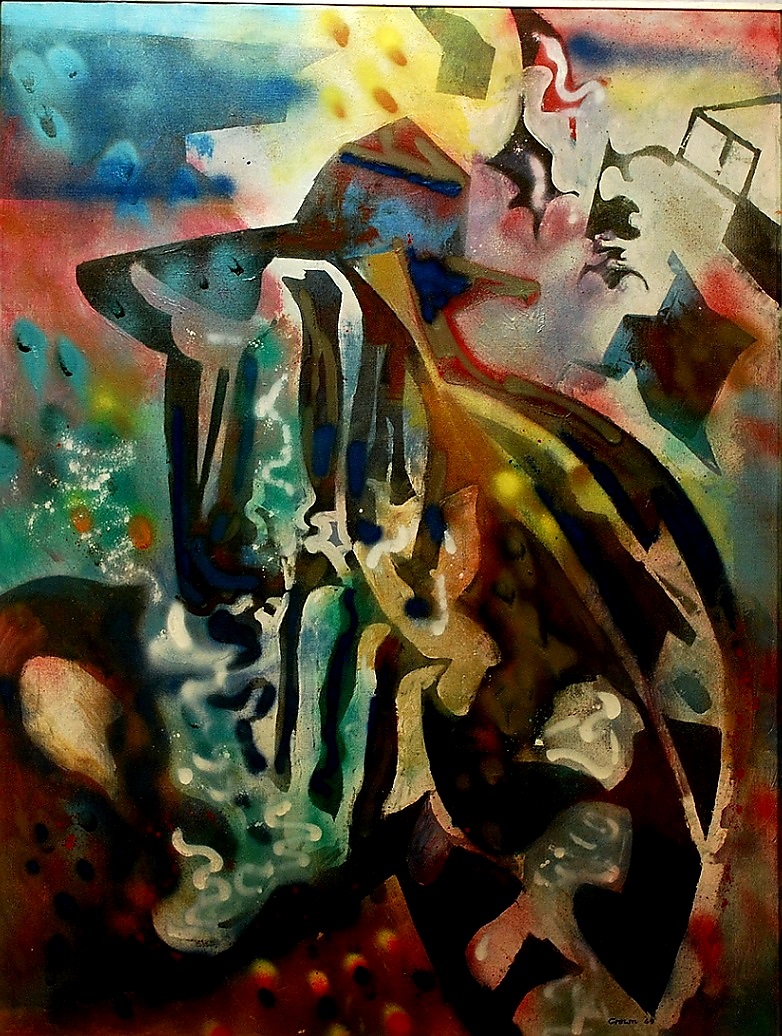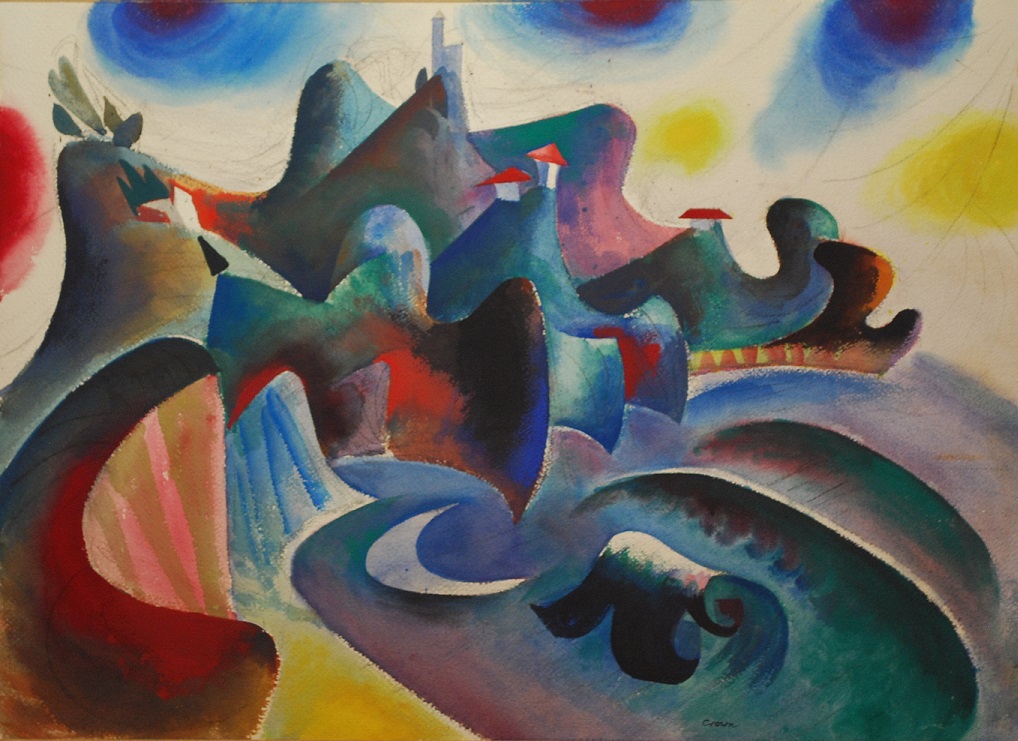Keith Crown
A Daughter's Perspective
Some of my earliest memories of painting with Keith are about painting up in Palos Verdes. We lived in Manhattan Beach, but he liked to paint up in the hills. In those days (1950s and '60s), there were large farm fields up there. I remember Keith telling me that I could use any colors that I wanted. I didn't have to use conventional color. This was very freeing.

Keith spoke some about how painting the Pacific Ocean reminded him of his army comrades in the Philippines. He had been stationed there during World War II. His war experiences had a profound influence on him. Even during the war, he would be called upon to do art-related jobs. He spoke quite often about his Army experience and friends he had lost. Some of his drawings from the war were published in Yank Magazine.
When I was about ten years old, I asked Keith if he would give me some drawing lessons. He set up a still life and explained aspects of drawing to me. After I had drawn the still life, he said that children's art is so beautiful and meaningful, he'd rather that I keep drawing the way that I did naturally for a bit longer.
Keith was attracted to unusual subject matter. He enjoyed the challenge. He would set up his table on Rosecrans Blvd. in Manhattan Beach and paint the Los Angeles Airport. He also liked painting the Standard Oil refinery in El Segundo, or just the oil tankers off the coast in Manhattan Beach. I wonder sometimes if the industrial themes reminded him of his upbringing in Gary, Indiana. He disliked the conventionally pretty subject matter.

Even when Keith was painting more conventional subjects, such as the Manhattan Beach Pier or the Redondo breakwater, his poetic sensibility would turn them into something new and reinvigorated. Keith felt very strongly about painting his subjects on the scene. He never painted non-objectively. He also very rarely came back to work on the same painting. He finished his painting in one sitting. He would start by working out the composition as a little study in his sketchbook. This would take about twenty minutes. Then he would do his painting. Keith usually finished a watercolor in about four to six hours.
Especially in the '40s and '50s, Keith talked about how the horizon should be curved because the Earth was round. So, most of the paintings from that era have curved horizons, as well as curved piers.

When we were painting Keith would say, "Hey Katie, what's the best thing about doing a painting? . . . It's such damn fun!"
Keith applied anthropomorphic qualities to his topics. He especially liked using sexual metaphors. Starting in the late '60s his piers and palm trees became phallic. He seldom painted people, but his landscapes had the human aspects.
I think Keith started using an airbrush on his watercolors in the mid to late '60s. Initially he would use an overinflated spare tire as the source of air. Later he purchased a compressed-air tank. Once we were painting by the side of a swiftly moving river. I went to roll the spare tire down out of the van to get it to the river bank. It bounced down from the van, but then it kept on bouncing and it vaulted right into the river. Keith and I were dumbfounded! There were some fishermen downstream from us, and Keith ran down and asked if they could cast out and snag the tire. They actually were able to do this, and it saved the day! We got a good laugh out of it later. Besides using an airbrush on his watercolors, Keith also was using cans of spray paint on his oils.

Keith would usually listen to music while he painted. He knew all of the classical composers -- Mahler and Stravinsky were two favorites -- and would talk about their compositions. In the studio classes he taught at USC and other universities, he would allow popular music to be playing while the students worked. Keith was popular with his students. He inspired students to feel freedom about how they used line and form in their drawings. He also had a great sense of humor.

